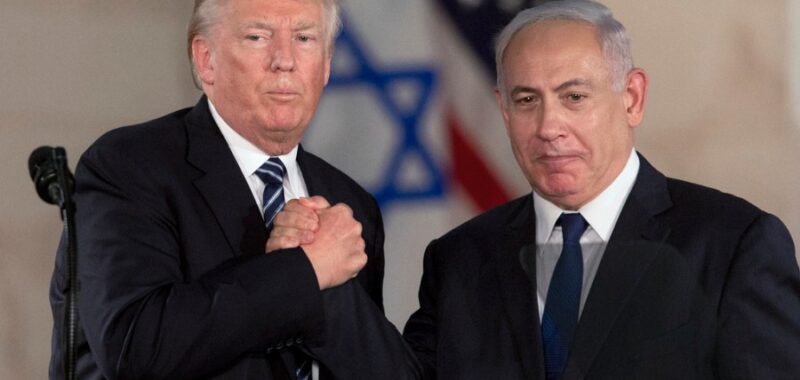
The Iranian regime tried and failed to assassinate President-elect Donald Trump. It seems the third time is not the charm. The incoming administration will get its chance to avenge the attempt on Trump’s life, and simultaneously accelerate a grand realignment in the Middle East.
In the last 45 years, the Islamic Republic of Iran has brought terror and instability to that region, not to mention to its own citizens. Its proxies — Hamas, Hezbollah, the Houthis and Kataib Hezbollah, among others — serve to export the regime’s radical perversion of Shia Islam and establish regional hegemony. Tehran retains plausible deniability.
In the 1980s, the newly formed Islamic Republic established strong ties with Syrian President Hafez Al-Assad, father of the current butcher of Damascus, Bashar Al-Assad. Hezbollah, an extremist Shi’ite group, established a shadow state in Lebanon. The only obstacle to Iran’s contiguous path to the Mediterranean was Iraq.
With Saddam Hussein’s ouster in 2003 and his Baathist regime gutted, Iran backed the Shi’ite terrorist groups vying to fill the power vacuum. Iran connected its proxy network, thus establishing a corridor across the Levant known as the “Shia Crescent.” In 2014, the Houthis took over Yemen, extending Iran’s influence to the tip of the Arabian Peninsula.
Presidents Obama and Biden understood that the Middle East is a region of instability. But rather than focus on the Iranian regime and its proxies, they consistently found fault with Israel. During the Obama administration, this culminated in allowing the UN Security Council to condemn Israeli settlements — a sharp break from American policy. The Biden administration went a step further by sanctioning Israeli settlers.
The first Trump administration bucked the traditional view that the path to peace ran through the Israeli-Palestinian conflict. Instead, it recognized the reality that Arab states and Israel are aligned against the threat of Iran. The Abraham Accords formalized that reality, providing the basis for additional deals along economic, security, energy and technological lines.
Trump moved the American embassy to Jerusalem, recognized the city as Israel’s capital, and recognized Israeli sovereignty over the Golan Heights. And the Arab nations, despite such unconventional moves, did not shy away from peace deals with Israel.
This new approach offered two lessons. First, Israel was never the obstacle to peace. Second, the Sunni Arab states care more about the threat of Iran than they do about the Palestinians.
President-elect Donald Trump will now have four more years to build on this realignment of the Middle East — and alter the course of world history.
His second administration can start by striking at the serpent’s head. He plans to reimpose his maximum pressure campaign on Iran, maximum pressure campaign on Iran. The administration can also implement secondary sanctions on oil importers, primarily China, which will cut off the funds enabling the regime to survive. Blocking the Strait of Hormuz, through which most of its oil flows, would debilitate Iran’s regime.
Trump can target the Iranian regime’s Aerospace Force. The force is “responsible for deploying drones, cruise missiles, ballistic missiles, air defense systems, and radar technologies,” according to the Alma Research and Education Center. The administration can provide Israel with the breathing room to eliminate its leadership, including its commander, Amir Ali Hajizadeh; first deputy commander, Majid Mousavi; and operational deputy commander, Fereydoun Mohammadi Saghaei.
The Trump administration can supply Israel with additional munitions and systems necessary to dismantle Iran’s military infrastructure. This includes Joint Direct Attack Munitions, Small Diameter Bombs, Spice guidance kits and 155mm howitzer shells. It can expedite the delivery of Boeing’s KC-46 refueling aircrafts that Israel is expecting to receive starting in 2025. These planes, which can refuel mid-flight, would be necessary to carry out a prolonged, long-range strike on Iranian facilities.
A new administration can help create the cultural conditions for a bottom-up transformation of Iranian politics. The change must be organic, but the Iranian people need external support. An intense media campaign inside Iran led by Voice of America can expose the regime’s abuses, like the recent disappearance of female student Ahou Daryaei. Keep the television prompters rolling.
The most recent attempt on Trump’s life by the Iranian regime is but another reminder that Iran, not Israel, is the source of instability. But where Tehran has failed to kill one bird with many stones, the second Trump administration can kill three birds with one stone. It can dismantle the Islamic regime in Tehran, avenge Iran’s plot to kill Trump and other Americans and reshape regional dynamics in favor of Western allies.
Obama and Biden believed that peace went through Jerusalem. The incoming administration has four more years to cast that paradigm aside and provide true stability. The ever-desired “lasting peace” will go through Tehran.
Gabriel Diamond is a fellow at the Yorktown Institute.

